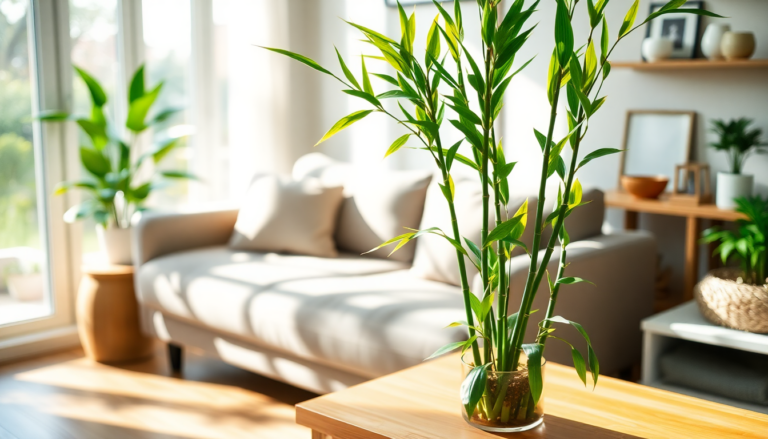Argomenti trattati
What is lucky bamboo?
Lucky bamboo, scientifically known as Dracaena sanderiana, is a popular houseplant that infuses your living space with tranquility and charm. Originating from West Central Tropical Africa to North East Angola, this tropical plant is often mistaken for true bamboo, but it is actually related to asparagus. Its elegant stalks and lush foliage make it a favorite for indoor gardens.
The symbolism of lucky bamboo
In traditional Chinese culture, lucky bamboo is associated with good fortune and prosperity. The number of stalks in a lucky bamboo arrangement holds different meanings, each one symbolizing various aspects of life. For instance, a single stalk represents simplicity, while three stalks are believed to bring happiness, long life, and wealth. However, it’s essential to avoid lucky bamboo with four stalks, as this number is linked to bad luck and death in Chinese tradition.
Why choose lucky bamboo for your home?
This resilient plant is not only beautiful but also easy to care for, making it an ideal choice for both novice gardeners and seasoned plant lovers. Samuel Davis, the CEO of London Gardeners, emphasizes its low maintenance needs. Whether you opt for a potted plant or cuttings in a vase filled with chlorine-free water, lucky bamboo is sure to thrive with minimal effort.
Caring for your lucky bamboo
To keep your lucky bamboo healthy, it thrives best in indirect sunlight and requires clean, purified water. Samuel Davis recommends changing the water every two weeks and ensuring the pot has proper drainage to prevent root rot, a common issue with this plant. Additionally, if you’re looking to boost its growth, consider using a diluted liquid fertilizer. However, if you notice the leaves turning yellow, it’s time to stop fertilizing as this may signal over-fertilization.
Propagating lucky bamboo
One of the great features of lucky bamboo is that it can be propagated easily. If your plant starts to look a bit limp or straggly, you can cut a healthy main cane, remove excess leaves, and place it in water until it develops roots. Once rooted, you can transfer it to a new pot and enjoy your newly propagated lucky bamboo.
Safety precautions
While lucky bamboo adds beauty to your home, it’s important to note that it is toxic to pets and can cause mild symptoms in humans if ingested. The plant contains saponins, which can lead to issues such as vomiting and depression. To keep your environment safe, place your lucky bamboo out of reach of small children and pets.
Optimal growing conditions
Lucky bamboo plants are quite versatile and can thrive in a variety of settings. Whether you choose to grow it in a vase of water or in soil, the key is to provide moderate indirect sunlight and maintain adequate humidity. If you notice the stalks turning yellow, this could indicate that the plant is drying out, and you may need to adjust its location. Ideally, keep it in a slightly shady area or one with filtered sunlight.
The lifespan of lucky bamboo
Typically, lucky bamboo plants can live for one to two years if grown in water, but their lifespan can increase significantly when planted in soil. As per the NC State University Extension, these plants are perennials, meaning they can return season after season, provided they are cared for properly.
Where to place your lucky bamboo
Consider placing your lucky bamboo in areas such as your living room, bedroom, or home office, where it can benefit from natural light without being exposed to harsh sunlight. A bookshelf or a spot with indirect light is ideal. This way, you can enjoy its beauty while also reaping the benefits of its symbolic significance.
Embracing the charm of lucky bamboo can transform your home into a serene oasis while inviting a little extra luck into your life.

